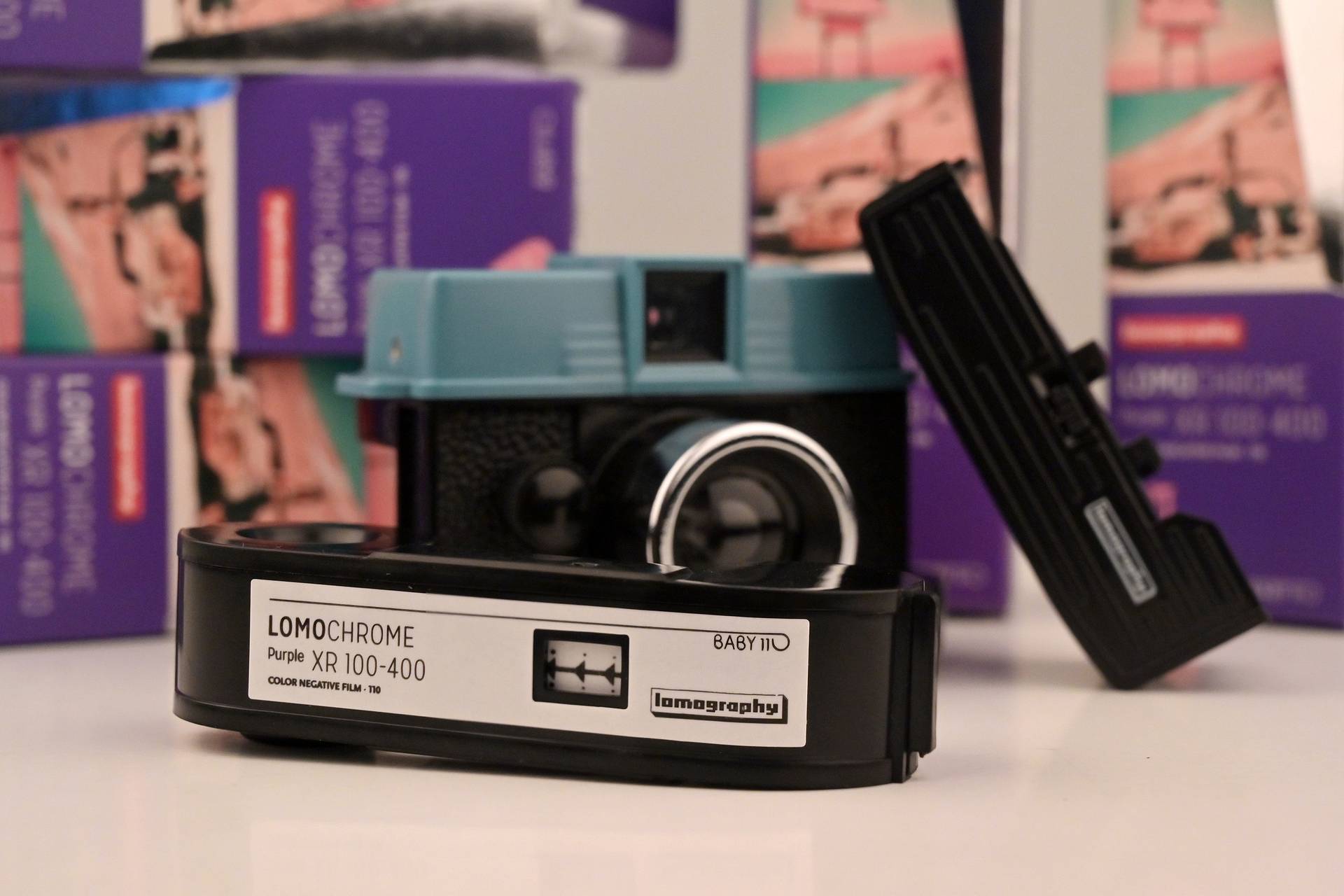What is 110 film?
The 110 film format (also known as pocket film) was introduced by Kodak in 1972. This cartridge-based film measures just 16 mm in width, roughly half the size of the 35 mm film most people are familiar with.


110 film also has a different loading system. It comes in a sealed unit with two separate containers for exposed and unexposed film so unlike 35 mm film it does not require rewinding. The unit easily slides into the back of the camera and all you need to do is wind on and shoot. This was a major selling point when it was first introduced as it satisfied consumers who had difficulty with the process of loading film and attaching the film leader into the take-up spool. You can also swap cartridges halfway through a roll very easily, you’ll just lose one shot when doing so.

The convenient size of pocket film cameras and their ease of use made them very popular when they were introduced, although they are still too overlooked these days.
In 2012, Lomography released new 110 Film, which was the first to be produced since its discontinuation by Fujifilm in 2009. Today Lomography is still the only manufacturer of 110 film which can be used with our Diana Baby 110 camera.
Anything missing?
Can’t find an answer to your question? Or do you have some useful advice to add to one of our courses? We want to build the world’s largest analogue learning space, so please send any further requests or information to school@lomography.com and we’ll take a look!
More Courses
-
Can I change a 110 film cartridge while shooting?
Yes, 110 is the only film format that allows you to easily and safely change the cartridge mid-roll!
-
Where can I get 110 film developed?
Contact your local labs to find out if they develop 110 film, or send it to us at our LomoLab.
-
What are the different photographic film formats?
The three main types of film format are 35 mm, medium format and large format. More unusual formats also exist such as 110 and 127.
-
What is tungsten film?
Most standard films are daylight-balanced, so they tend to capture the yellow-orange cast from tungsten lights. To address this, tungsten film was created to produce color-correct images taken under artificial lighting.
-
Why is there a wider image beneath my 110 film border?
With 110 film it’s normal to see a transparent film border and a wider image visible beneath. This is because 110 film is pre-exposed in order to make printing easier.
-
What is 126 film?
126 film was launched by Kodak in 1963 as a way to simplify the process of loading and unloading film into cameras. Its name comes from the negatives’ dimension of 26.5 mm square. Although companies ceased mass production of 126 format around 2007 to 2008, its cartridge is still known and loved today.
-
What is APS film?
Advanced Photo System or APS film was introduced in 1996 as a “high-tech” or modern alternative to the 126 and 110 film formats. It was 24 mm wide and it introduced many innovations, like the ability to choose exposure lengths and print sizes. Production of new APS film was ceased in 2011.
-
What are the advantages of shooting 110 film?
There are a few advantages to shooting 110 film, including convenience, ease of use and of course that beautiful grain!
-
How do I load 110 film into my camera?
To load a 110 film into your camera, simply open the back cover of the camera, pop the cartridge inside, close the cover, and then wind the film until you reach the first frame.





